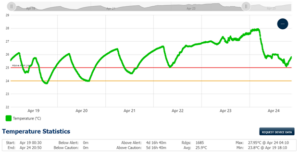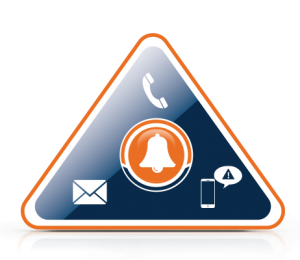Surgery Center Ensures Environmental Conditions Are Safe, Even During Off Hours.

It is common knowledge that air temperature, humidity, and pressure are important factors to controlling infection risk and providing a safe environment for patients and staff.
What happens when the facility is closed can impact daily operations.
This is the first in a series of case studies sharing challenges and best practices employed by Ambulatory Surgery Centers (ASCs).
Leading-edge ASCs are adopting continuous monitoring of temperature, humidity, and differential pressure to manage a difficult set of trade-offs impacting patient safety and the bottom line.
Regulatory agencies such as the Accreditation Association of Ambulatory Health Care (AAAHC), the Joint Commission, and the Center for Medicare and Medicaid Services (CMS) are all increasing requirements for monitoring and logging environmental parameters to help reduce infection rates.

Humidity
One challenge many ASCs have is controlling humidity. Seasonal changes and the desire to save energy costs make it difficult to keep humidity within required limits.
The Sterling Chart below is excerpted from an ASHRAE paper prepared by E.M. Sterling, A. Arundel, and T.D. Sterling, Ph.D.
The paper proposed the optimal range for humidity is between 30% and 60% and has been adopted by regulatory agencies as mentioned above.

Seasonal Changes
The chart below shows the impact of seasonal variances in humidity that many HVAC systems around the country find challenging.
One can observe from this real-life case, there are only brief periods of time between seasons, where humidity is consistently in compliance with regulatory requirements.

Humidity was continuously monitored every five minutes with NIST-certified sensors carefully located in each room. The resulting reports allows the HVAC system to be tuned to meet requirements.
A Not-So-Uncommon Scenario
After an excellent day of serving patients, your facility has been put to bed for the night.

A good night’s sleep has been earned.

It’s the middle of summer, so the HVAC system has been dialed back to save energy.

The next morning

Temperatures in sterile areas of the faciality have been allowed to rise to 75 – 80 degrees F, to save energy. The humidity is a little high, but acceptable.
In preparation of arrival of the surgical team, the temperature is reduced to 60 – 65 degrees causing the humidity to race past 90%, dangerously close to saturation! If the capacity of the HVAC system is unable to handle the increased humidity, sterile storage and the ORs are at risk.

Condensation dripping from the ceiling is the last thing anyone needs, especially first thing in the morning.
Case Study
Thankfully, the situation at the Dublin Surgery Center in Ohio was not so dramatic. The facility did have a similar challenge where the HVAC system could not adequately recover from being dialed back at night.
By using continuous monitoring, the Director of Nursing had the information to see the issue, work with her HVAC provider to make adjustments, and have a log showing improvements.

“I had the data that helped me help my HVAC person!” –Director of Nursing
During audits, the surveyors were favorably impressed and commended the use of continuous monitoring and the records that were continuously logged.

Beyond Humidity
In addition to humidity, the Dublin team is continuously monitoring other assets at the facility.
A shout out to the Director of Facilities at SCA for input to the table at the right.
The Dublin Team Working Together
A new tool required a new process. Below is how the Dublin team takes action if environmental parameters drift beyond limits.
STEP 1 – The Business Office Teammate arrives early to the office and checks PharmaWatch for any issue. By clicking on the green checkbox, a log is created showing, who checked, when they checked, and the current readings. If action is required, an email is sent to the Director of Nursing, OR Supervisor, and the Administrator, on the status before they arrive at the facility.

STEP 2 – When the Director of Nursing arrives at the facility, she has the information to take action to address any issues.
STEP 3 – Every morning at 10:00 AM, the Director of Nursing responds to a calendar event to resets alerts on the PharmaWatch portal, creating a record of what was wrong, and what was done to fix it.

Summary
A quote from the CDC – “Although significant progress has been made in preventing some healthcare-associated infection types, there is much more work to be done. On any given day, about one in 31 hospital patients has at least one healthcare-associated infection.” March 2019
https://www.cdc.gov/hai/data/index.html
Continuous monitoring of air temperature, humidity, and differential pressure is becoming mainstream as we learn more about the subtleties of controlling infections.
To learn more about continuous monitoring and it’s positive impact on patient safety and the bottom line of your business, contact us.
Written by Michael Altree



